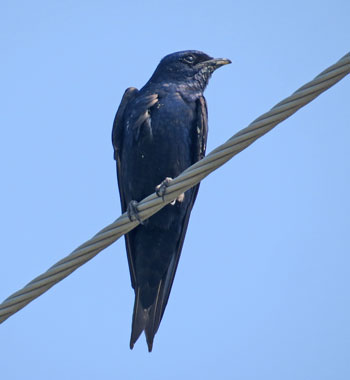Swifts and swallows are among a group of birds collectively known as “aerial insectivores” because they feed by capturing insects on the wing. Over the last 5-10 years, it has become apparent that populations of most species in this group are in significant- often dramatic- decline, but conservation biologists have yet to fully understand the factors behind the declines. Several species are already listed as “species of greatest conservation need” by multiple states, including some listed as threatened or endangered. Declines have been particularly strong in the northeastern United States and especially in Canada, where several species (including the widespread Chimney Swift and Bank and Barn Swallows) are considered “threatened,” and more are currently under evaluation.
Interest in conservation of aerial insectivores as a group is only just beginning to emerge in the northeastern United States. Several projects have been initiated in at the state level in New England, but these often focus on different species or use different methodologies. Thus, although there is clear interest in insectivore conservation in the Region, there is also a need for greater collaboration and sharing of ideas.
New Hampshire Audubon’s existing projects with aerial insectivores include Project Nighthawk, Swallow CORE, Chimney Swift roost counts, and Olive-Sided Flycatcher Surveys.
Project Leaders: Pamela Hunt and Rebecca Suomala


